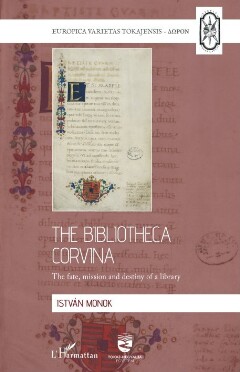Page 122 [122]
otheca Corvina (although it was probably the remains of the royal chapel library).
An Austrian Augustinian monk, Xystus Schier, wrote the history of the library
for the first time (1766).°°* When a Hungarian count, Ferenc Széchényi, founded
the “Bibliotheca regnicolaris’ (1802), in the preface to its catalogue*® the head of the
imperial library, Michael Denis, praised the count, but also warned: Collecting
books is not an end in itself, but is a service. It must serve the scholars and citizens
of Hungaria and Transsilvania, parts of Austria, the patria. The patria, according
to Denis, is the Empire itself and all its inhabitants of all nationalities. Denis is
paraphrasing Cicero, replacing the word Urbs, meaning Rome, with Patria:
»Primum inde gratulabimur Hungariae de Cive tam illustribus argumentis suum in
eam amorem comprobante; dein Ipsi de egregiis in Patriam meritis; tum vota fa¬
ciemus ut quae felicibus adeo coepit auspiciis, in commune Literatorum bonum ad
apicem perfectionis educat. li vero Popularium suorum, quibus aut mens, aut oppor¬
tunitatis rerum domesticarum penitius cognoscendarum hactenus defuit, ad Excel¬
lentissimum Szechenyium grato animi sensu illis Tulli ad Varronem verbis uti poterunt:
Nos in nostra Patria peregrinantes, errantesque, famquam hospites, Tur Libri quasi
domum deduxerunt'Ss
For Hungarians, however, the library of Ferenc Széchényi did not become a diblio¬
theca regnicolaris, but a bibliotheca nationalis.**” It was not founded by a foreign em¬
peror, nor by the church (any church), but by a (Catholic) Hungarian count. Later
his son Istvan Széchenyi will found the Hungarian Learned Society in 1825,
while another aristocrat (Calvinist) Jozsef Teleki will found its library (1826). The
national cultural institutions established during the 19th century (library, mu¬
seum and archives) were engaged in a noble competition with university libraries
to acquire corvina codices.
The Southern Low Lands were taken from the Habsburg Empire by the
French, and then, by decision of the Congress of Vienna, became part of the
Kingdom of the Netherlands. In 1830 they managed to get rid of this forced
coexistence and the Kingdom of Belgium was created, however the struggle for
Hungarian independence failed in 1848-49. In the Reform Era of Hungarian
history, the Austrian court, at the suggestion of Joseph Habsburg, the Palatine of
the Hungarian Kingdom, had already been in Istanbul in the 1830s and 1840s to
try to get information about the corvinas in Istanbul, without success.°** From the
1860s, Emperor Franz Joseph tried to approach the Turkish Empire, so he visited
Istanbul while on his way to the opening of the Suez Canal. Sultan Abdulaziz
553 CsAPODI 1984.
554 SCHIER 1766.; SCHIER 1699.; EKLER-MONOK-ÁBRAHÁM (ford), kiad., Xystus Schier..., 2019.
55 SZÉCHÉNYI, Catalogi, I., 1799.
556 CICERO, Academica posteriora I. 9. ; cf. AuGusTINus, De Civitate Dei, 6, Caput II.
57 Cr. Monok 2019, 84-88.
558 Mixó 2002.
120

